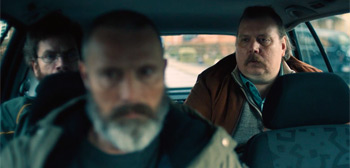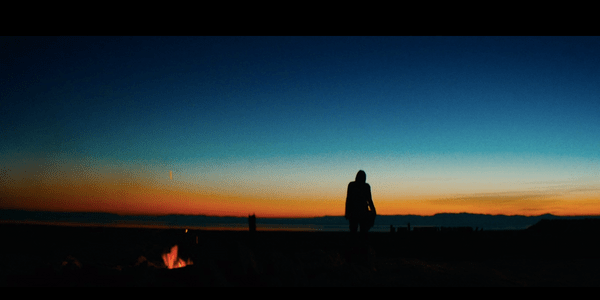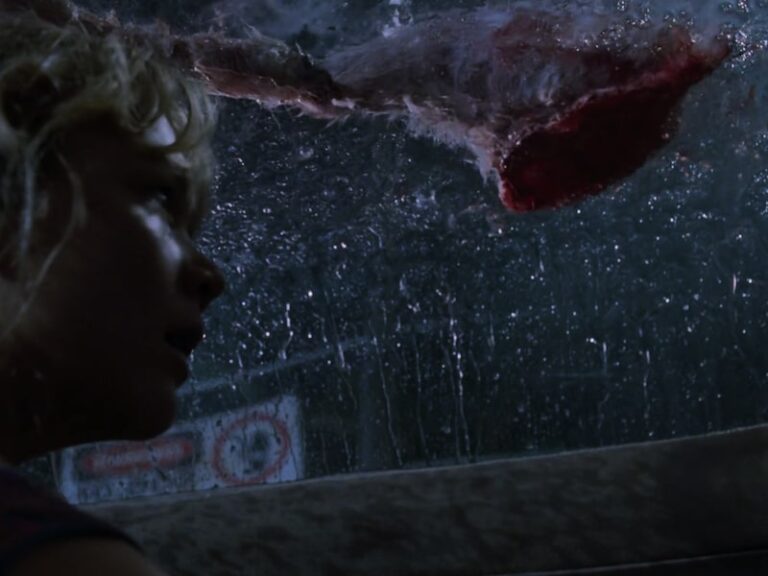How ‘The Phantom’ Beat the Odds and Became a Cult Favorite
In the vast history of comic book characters and their origins, The Phantom, also known as The Ghost Who Walks, is noted as being the first superhero to don a skintight costume.
The character, which was created by Lee Falk and first appeared in newspaper strips in 1936, also lives in a cave, rides a horse, battles pirates and evil doers and, indeed, wears purple spandex and a black mask. He also goes by the alternate identity of Christopher “Kit” Walker and wears a skull ring to signify his secret life as…The Phantom.
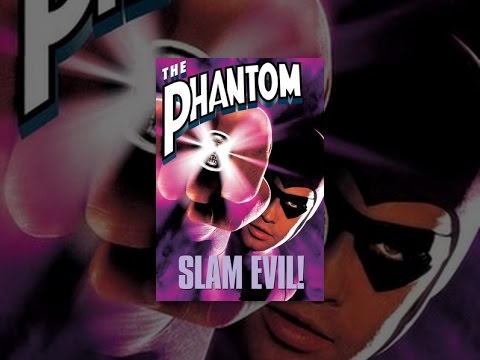
Billy Zane stars as the title character, who battles the Sengh Brotherhood, which includes smugglers, politicians and pirates. He also aides and protects Diana Palmer (Kristy Swanson) as she finds herself entangled in the devious intentions of Xander Drax (Treat Williams).
Simon Wincer’s “The Phantom” (1996) is the first and, to date, the only big-budget film adaptation of the character. Aside from appearing in the “Defenders of the Earth” animated series, the character has no other recent appearances in film or television.
While the film was an instant flop in theaters, it has amassed a large cult following.
During my first year of teaching college film classes, I had a student sheepishly hand me a DVD copy, asking me to watch it, her “favorite movie.”
I saw this on June 7, 1996, opening day and really despised it. There was a corniness in the tone that felt at odds with the handsome production design and the character never resonated with me, whether he was dressed in purple or simply Kit Walker.
In comparison to the big guns of the summer of ’96, it felt like such a non-event. Think “Mission: Impossible,” “The Rock” and “Independence Day.”
To give the film another look in 2021, its 25th anniversary, is to see all too clearly why the film continues to charm an audience:
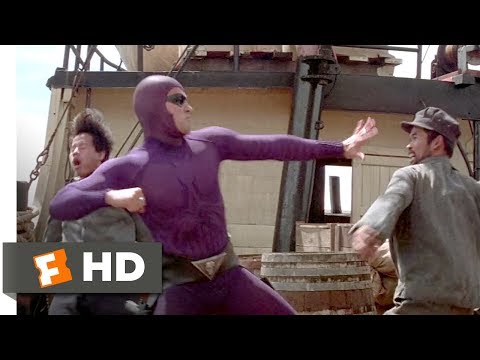
It begins with the title card: “For Those Who Came in Late.” Then, in under two minutes, the film unloads an absurd amount of backstory.
Zane’s intro is an extreme close-up of his masked face and of putting apparel together, all the proof we need that the filmmakers saw Tim Burton’s “Batman” (1989).
Drax aims to acquire The Three Skulls of Tuganda which, when put together, “will produce a force more powerful than any on Earth.” It’s a clunky special effect of colorful eye rays shooting out of skulls, a visual right at home in something like “Mighty Morphin Power Rangers.” The take-it-or-leave-it cheesiness of the story is countered by the large sets and stunt work (note a cool sequence of a plane-to-horse transfer).
Because it doesn’t fully acknowledge the elements of parody, it plays less like a homage to a creaky B-movie jungle adventure and more of the real thing. Then, there’s the account from producer Joe Dante:
In 2008, Dante gave an interview to Den of Geek where he revealed the tongue in cheek screenplay he co-wrote with Jeffrey Boam was turned down, only to be revitalized years later with Wincer as director, but without anyone involved fully grasping that it was written to be a spoof.
Dante’s claim that it was written as a comedy and produced by filmmakers who played it straight faced and overlooked the elements of parody, seems plausible as evidenced by the final result. The campiness feels accidental, which is why the cult following is deserved.
Unlike dozens of other failed franchise builders that never took off (I’m looking at you, “Van Helsing”), the classic serial B-movie tone of “The Phantom” is less “Indiana Jones” than a carryover of the camp from the early days of cinema.
It opens with a truck on a rickety bridge sequence that, try as it might, comes nowhere near achieving the suspense of a famous, similar sequence from William Friedkin’s “Sorcerer” (1977). Yet, it still works, because of the adorable earnestness in full view.
FAST FACT: “The Phantom” flatlined in theaters in 1996, earning a tepid $17 million.
Wincer, a few years after his big breakthrough with “Free Willy” (1993), knows to keep things moving and pulls off some rousing moments (like The Phantom’s slide during an elevator shaft and hopping from one period car during peak traffic to another).
Zane gives it his best, even as he sometimes comes across like a poor man’s Val Kilmer.
Swanson, who was about to embark on the B-movie leg of her post-“Buffy the Vampire Slayer” career, is far too contemporary. On the other hand, Catherine Zeta-Jones was just two years away from her big breakthrough in “The Mask of Zorro” but already strutting and vamping through this movie like the full-blown movie star she was about to become.
Playing the “Leader of the Sengh Brotherhood” is the always-game and wonderful Cary-Hiroyuki Tagawa — his presence is enough to elevate any big budget B-movie.
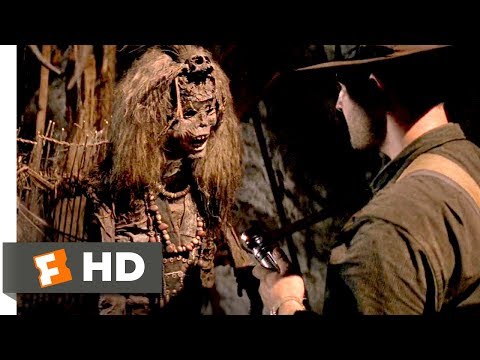
Details I loved: Ever faithful to the source material, The Phantom not only still resides in his Skull Cave, has a wolf sidekick called Devil but frequently speaks with his ghost dad mentor, played by Patrick McGoohan (!).
We learn there were apparently 24 Phantoms before Kit, as those outside the cave think it’s been the same guy all these years.
A recurring line: Cornball pieces of advice that begin with, “Old jungle saying…”
The Phantom tells a child, “Stay away from bad guys.”
Another hall of fame line: “No smoking in the Skull Cave.”
Also, a villain instructs a henchman: “Bring her — she’s our Phantom Insurance.”
We also have a scene where Devil runs over to The Phantom’s horse, barks orders (sadly, no subtitles to provide the dialog), then the two of them run off together, outpacing a plane (!).
Finally, It concludes with an actual pirate fight, as well as a supernatural laser battle between a purple ray and a green ray. If you can avoid smiling during the final 20 minutes, you’re made of harder stuff than I am.
When the film opened, it had a corresponding “Got Milk?” ad campaign, in which a fully costumed Zane sported a milk mustache. Then there’s “Slam Evil,” one of the all-time dumbest movie poster tag lines that followed this movie everywhere it went.
It’s no wonder audiences found this so resistible.
While not on the level “Dick Tracy” (1990), “The Rocketeer” (1991), or “The Shadow” (1994), this aims to evoke that era and feel but without achieving the serious tone of those films. However, like Lamont Cranston in “The Shadow,” The Phantom also has a wacky cabbie sidekick (played by reliable character actor John Capodice).
Wincer’s brisk, classy production still feels out of place with contemporary superhero films, as it’s probably too cheerful and unapologetically goofy for either the MCU or DCU fanbase.
It’s so silly but admirably committed to its pulpiness, it’s kind of adorable, as well as unpretentious. I’m hoping we see The Ghost Who Walks once again at the movies, but he has to bring along Devil the Dog and his Skull Cave.
You need all the help you can get while slamming evil.
The post How ‘The Phantom’ Beat the Odds and Became a Cult Favorite appeared first on Hollywood in Toto.
